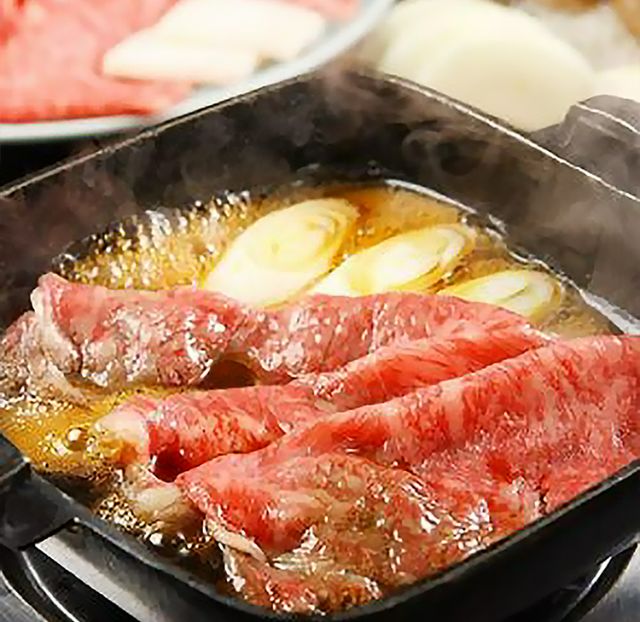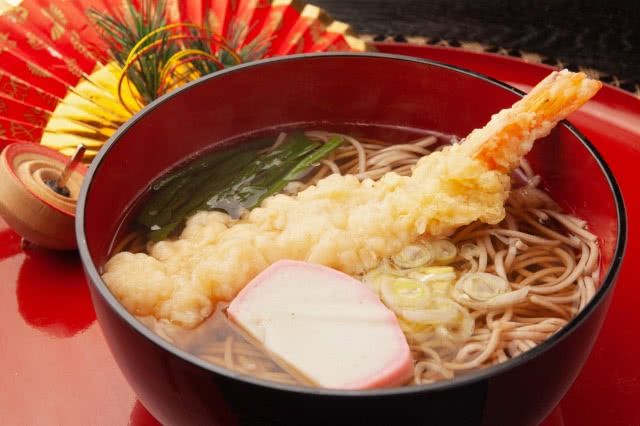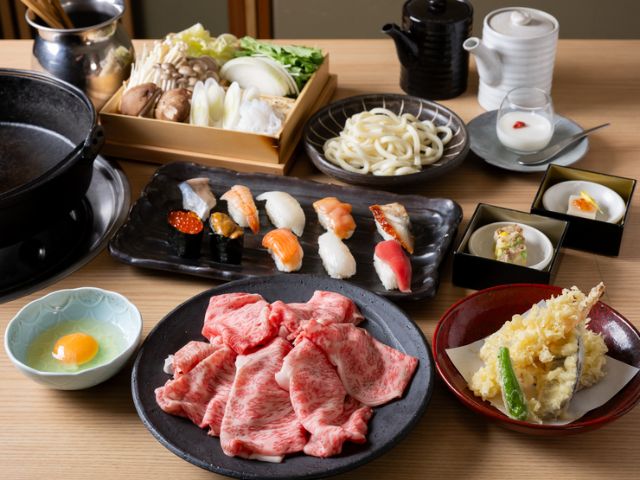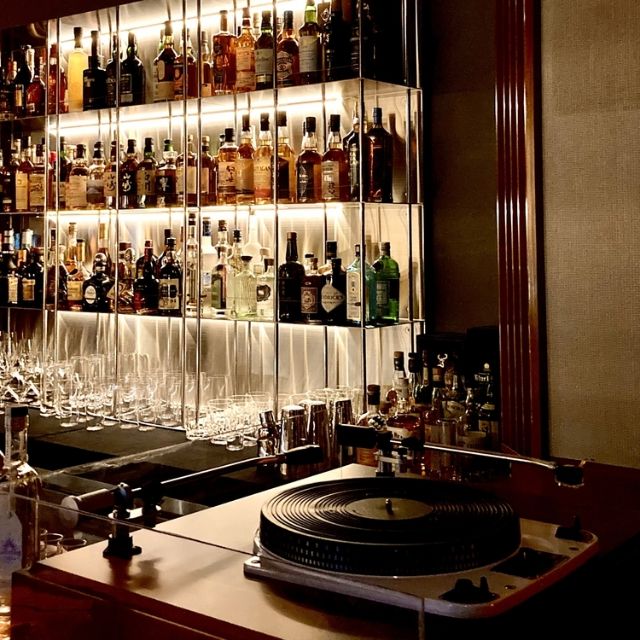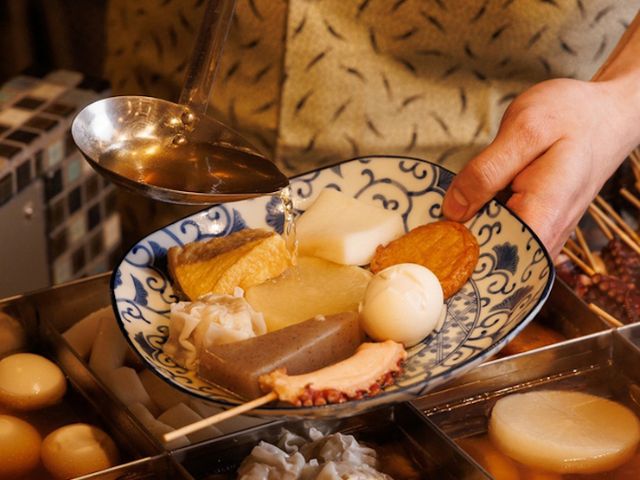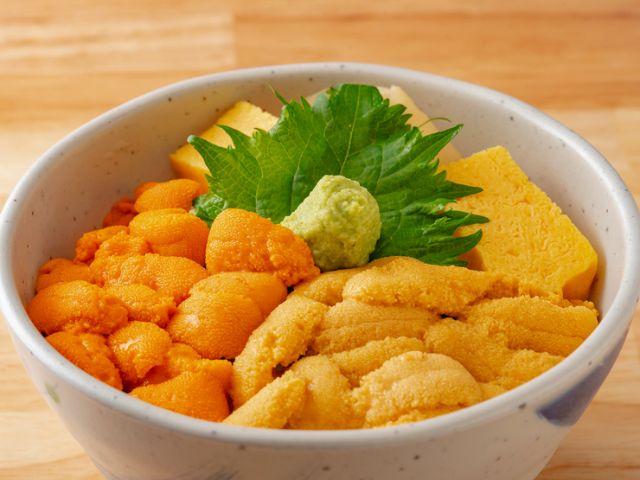5 Spots for Soba Noodles & Drinks, Perfect for Hearty Fare & Endless Libations - Tokyo
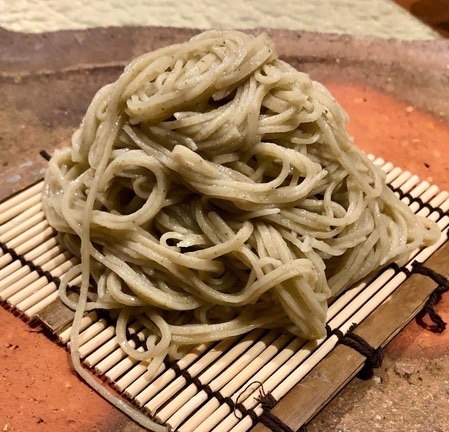
Yuzutsu / Daikanyama recommended by Suzu, who is really into having relaxing drinks
Nightly Enjoyable Sake and Soba - Enjoy new sensations that combine Japanese x French cuisines
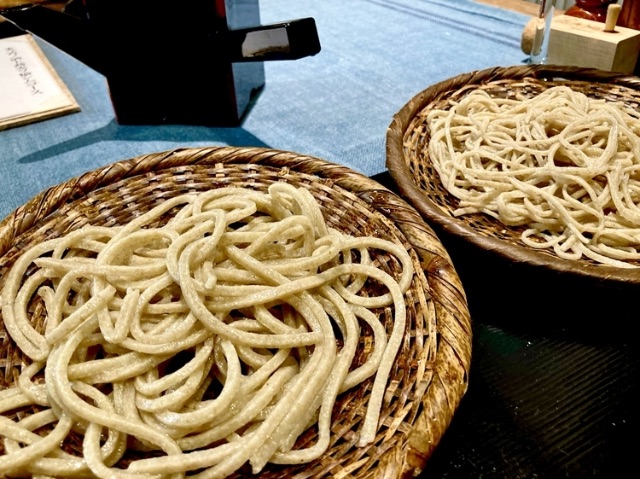
Soba is strongly associated with Japanese food, but there are restaurants out there where guests can eat unconventional soba courses that incorporate French cuisine, such as Yuzutsu. This restaurant is located a 3-minute walk from Daikanyama Station. You might think that such a restaurant would have a Kyoto-townhouse restaurant-style exterior and ukiyo-e prints hanging on the walls, but the chairs and utensils are all French brands. This already gave me high expectations for this unusual combination. We quickly requested the Nightly Enjoyable Sake and Soba, which lets you enjoy soba combined with terrine from the famous French restaurant Les Enfants Gâtés.
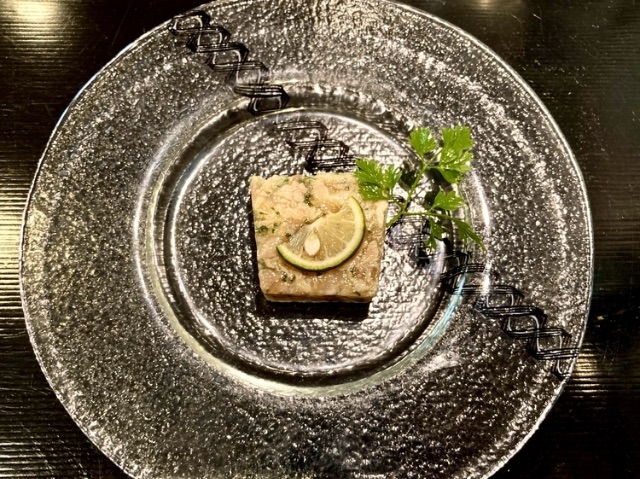
The terrine with chicken and pig's trotter has delicate and refreshing flavors with citrus sudachi on top. The addition of French cuisine is certainly a rare combination, but it goes surprisingly well with the Japanese courses. When we asked the restaurant about it, they said the addition of French food was specially thought of to go well with Yuzutsu's noodles. The course flowed naturally into the main course of two types of buckwheat noodles: pure buckwheat soba and coarsely ground organic buckwheat soba. The Burdock Tempura is also popular with carefully selected Japanese sake and shochu. We recommend dropping by here and enjoying a new combination of food and space, along with stylish moments.
Yuzutsu
Access: 3 minutes walk from Daikanyama station
Soba Osame - recommended by Shukubo, who loves having many dishes with small quantities / Mejiro
Eat and compare local varieties of soba in an old house
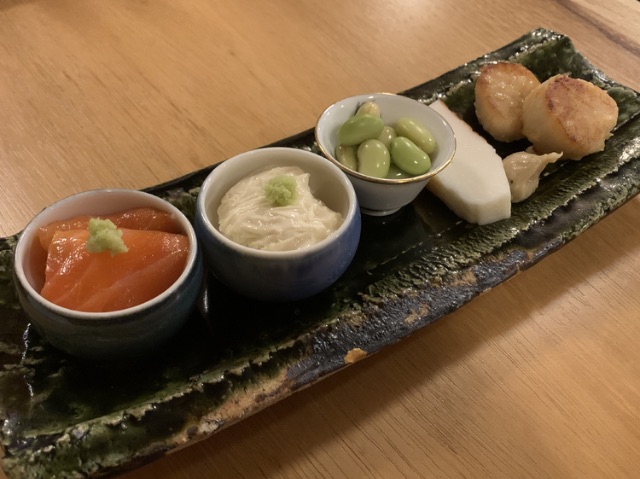
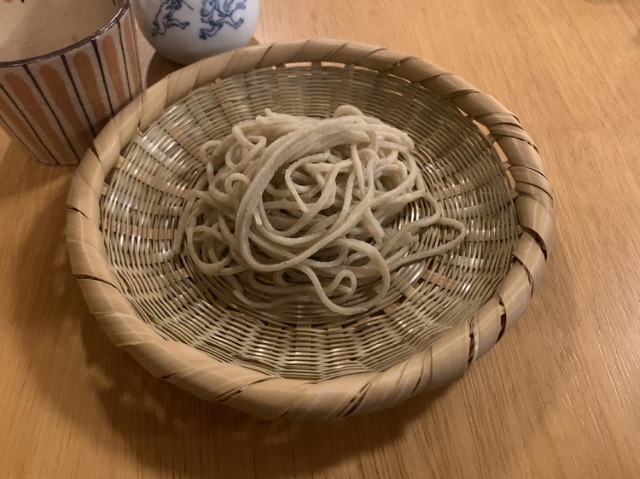
The day we visited, we ordered the Luxurious Soba Course (5,500 JPY) for lunch. we really enjoyed the appetizer assortments that go well with sake, like the Minced Buckwheat Mash, Tofu Skin Sashimi, and Scallop marinated in saikyo miso, in addition to their specialty Tamago-yaki (Japanese omelette) that uses ingredients found in soba. we waited impatiently for the soba, of which they have 3 varieties served in order: basket steamer, minced, and genbiki (soba made with aged course ingredients), all of which let you enjoy the delicious and rich flavors of each local variety. We definitely want to keep visiting this restaurant to try out their daily-changing varieties of soba.
Soba Osame
Access: 7 minutes walk from Mejiro Station
Sobakiri Uchiba - recommended by Terami, whose motto is “Brown is the right choice” / Aomono Yokocho
Here you freely enjoy authentic handmade soba. This famous restaurant revolutionizes the concept of soba that is eaten while standing
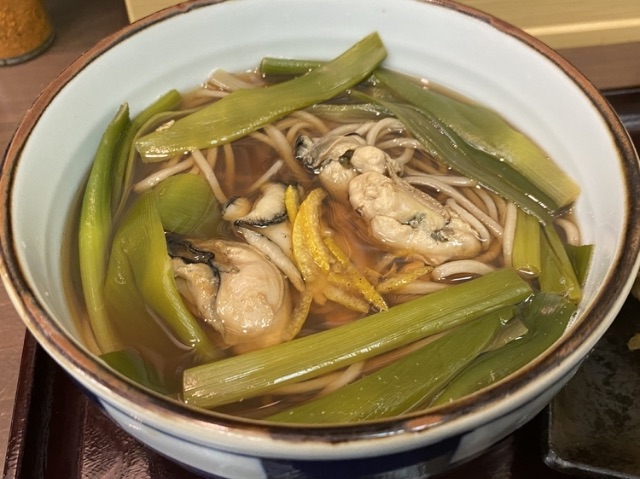
There are very few restaurants out there that you can really say serve inexpensive and delicious food. We first found this restaurant while in the middle of a walk and decided to drop by after we saw the beautiful soba making that can be seen from outside the restaurant.
What surprised us about this restaurant was that it was making authentic soba, but it was a soba restaurant where guests ate while standing. The soba fragrances floating through the restaurant and the surprising tap-tap sound of soba being cut made me start thinking that we were in a high-class soba restaurant, except I was standing right there in a restaurant like this.
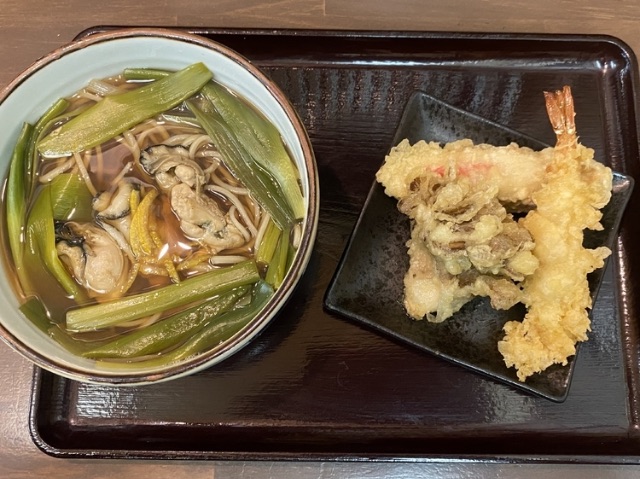
Because Nihachi (soba noodles made with a 2:8 ratio of udon and buckwheat flours) is a premium soba, the idea of a hand-made Nihachi soba restaurant where guests eat while standing might sound really confusing. But this restaurant brings its best with overwhelmingly high-quality soba. As it’s Nihachi soba, the thick-cut noodles and delicious flavors that you can chew thoroughly go through your nose, and the delicious flavors spread through your mouth. The ingredients with tempura and mountain vegetables certainly caught my attention, but we don't know any other restaurant where Soba takes the lead like this.
Nevertheless, the true value this restaurant offers is the complete lack of compromise on ingredients. Their options, including the elaborate limited edition menu items, the tempura with a highly seasonal feel that uses maitake mushrooms, and the Rural Soba, a pure buckwheat soba limited to 10 meals on weekends, all already surpass the level I'd expect from a stand-and-eat restaurant. Here, I felt a character similar to long-standing soba restaurants.
Maybe we don't need to mention this, but the restaurant has a full collection of the masterpiece manga Sobamon, the bible for Japanese soba fans. The time and effort to make the soba, as well as the serving time, are a bit longer compared to standard stand-and-eat soba restaurants, so we recommend reading this manga while waiting.
Ordinary prices and extraordinary flavors. When someone says this, we want to recommend Sobakiri Uchiba.
Sobakiri Uchiba
Azabujuban Soba Izakaya Sobagoya - recommended by Nakano, who wants to drink until morning / Azabujuban
Open until 5AM! Guests can enjoy delicious sake and soba any time they go
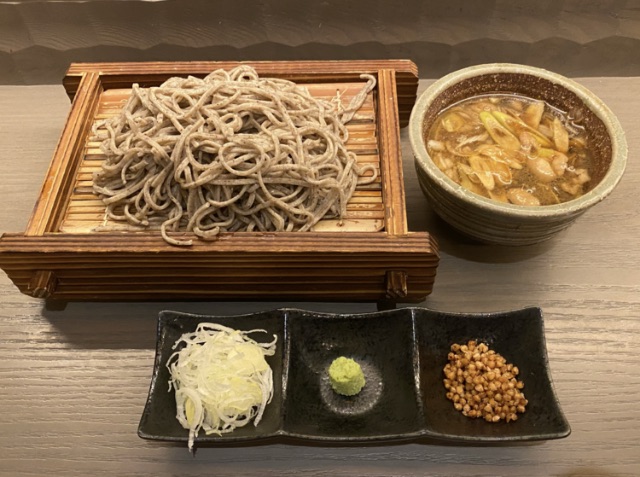
Sobagoya is open all night from 11:30 am to 5:00 am, making it perfect for casually entering when you want a light drink in the afternoon and for using as a second restaurant after drinking. The wide range of usability is also incredibly appealing. You'll want to try the soba first. You can choose from 2 varieties: the Genbiki Soba, prepared on a stone mill with buckwheat wrapped in a black shell, and the Marunuki Soba, made with shaved buckwheat skin. The Genbiki Soba enhances the shell textures and soba fragrances, and you can fully enjoy the flavors of the soba itself. You can choose from 3 kinds of noodle thickness: fine, medium-fine, and thick. We highly recommend the standard medium-fine noodles. The delicious dipping sauce combined with duck fat was strong and made us feel hungry.
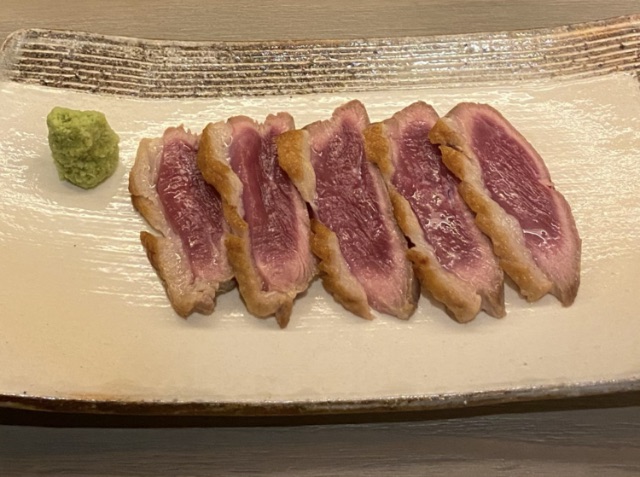
One item that we can't forget about is the minced domestic duck. They use cherry valley duck, and compared to chicken meat, it is fatty and thick. However, it has a low melting point, meaning it is soft and melts easily in my mouth, and it has extremely good flavors. It can be eaten simply with salt or soy sauce and goes perfectly with any Japanese sake. We definitely recommend this restaurant, as you can experience delicious duck. Even on days when we don't drink, we want to visit just to have the minced duck.
Azabujuban Soba Izakaya Sobagoya
Azabuyama Soan Mitate - recommended by Shima, an adult girl / Azabujuban
The ultimate trio of soba x champagne x amazing tuna
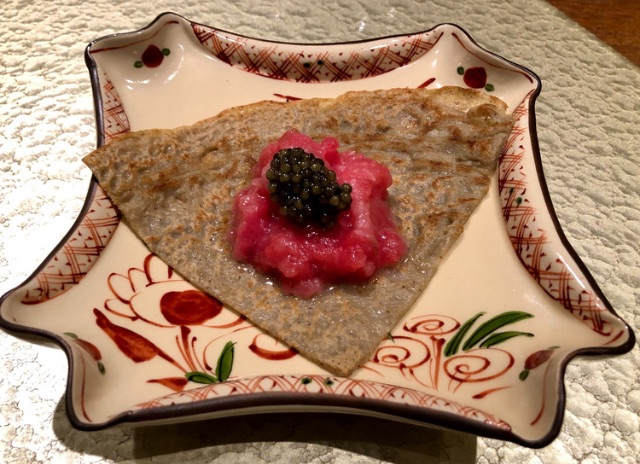

The performance of soba being made before my eyes as we entered the restaurant was the highlight of my visit. The freshly made soba is thinly cut but firm and springy, and the rich fragrances that use local varieties of soba go through your nose. As the pictures show, the real charm of Mitate is being able to enjoy different sizes of soba.
The course we ordered on the day of my visit featured Soba-mae (7 varieties), Tuna Rice Bowl with Freshly Cooked Rice, and Soba with Female Snow Crab. They only serve courses early in the day, but they are open until somewhat late. A la carte items can be enjoyed from 8:30 pm on weekdays, making this restaurant handy for using as a second restaurant during a night out.
Azabuyama Soan Mitate
Disclaimer: All information is accurate at time of publication.
Thank you for reading our article.
Our goal is to take your culinary journey to the next level by helping you find the best restaurant. With SAVOR JAPAN, you can search and make reservations for
the Soba restaurants found in and around Tokyo that fill your needs.
Discover more Soba restaurants by area
- Tokyo Area
- Near Tokyo
- Kyoto and Osaka Area
- Hokkaido Area
- Northern Honshu (Tohoku)
- Central Honshu (Chubu)
- Western Honshu (Chugoku)
- Shikoku
- Kyushu
- Okinawa and Ryukyu Islands
Discover more restaurants to eat Japanese Cuisine by area
Keywords
Related Articles
New Articles
Categories
Cuisine
- Bars (23)
-
Japanese Cuisine (676)
- Kaiseki (45)
- Nabe (19)
- Okonomiyaki (24)
- Shabu Shabu (36)
- Soba (17)
- Sushi (137)
- Tempura (18)
- Teppanyaki (46)
- Shojin Ryori (3)
- Tonkatsu (12)
- Kushiyaki (10)
- Yakitori (46)
- Sukiyaki (35)
- Japanese Cuisine (341)
- Oyster (2)
- Sashimi/ Seafood (19)
- Unagi (eel) (30)
- Motsu Nabe (offal hotpot) (6)
- Mizutaki (chicken hot pot) (3)
- Oden (8)
- Kaisendon (seafood bowl) (9)
- Udon (2)
- Taverns(Izakaya) Cuisine (125)
- Western Cuisine (42)
- Italian/French Cuisine (95)
- Yakiniku/Steak (225)
- Chinese Cuisine (26)
- Ramen (Noodles) Cuisine (26)
- Cafe/Sweets (60)
- Other Asian Cuisine (5)
- Global/International Cuisine (7)
- Alcohol (45)
- Other (11)
Area
- Shikoku (10)
- Kyoto and Osaka (345)
-
Tokyo (460)
- Tokyo (286)
- Ginza (44)
- Roppongi (22)
- Shibuya (26)
- Shinjuku (47)
- Asakusa (20)
- Ebisu (12)
- Tsukiji (10)
- Tokyo Landmarks (4)
- Ueno (24)
- Akihabara (9)
- Ikebukuro (12)
- Jiyugaoka, Denenchofu, Nakameguro (9)
- Shimokitazawa (4)
- Kichijoji (3)
- Tachikawa (1)
- Omotesando, Harajuku, Aoyama (18)
- Akabane (1)
- Kagurazaka (4)
- Akasaka (10)
- Odaiba (1)
- Tsukishima, Harumi, Toyosu (3)
- Near Tokyo (100)
- Okinawa and Ryukyu Islands (58)
- Hokkaido (124)
- Northern Honshu (Tohoku) (31)
- Central Honshu (Chubu) (144)
- Western Honshu (Chugoku) (32)
- Kyushu (92)
Archives
- December 2025(9)
- November 2025(4)
- October 2025(3)
- September 2025(6)
- August 2025(11)
- July 2025(19)
- June 2025(18)
- May 2025(34)
- April 2025(43)
- March 2025(30)
- February 2025(36)
- January 2025(26)
- December 2024(69)
- November 2024(31)
- October 2024(15)
- September 2024(39)
- August 2024(65)
- July 2024(31)
- June 2024(54)
- May 2024(61)
- April 2024(28)
- March 2024(31)
- February 2024(42)
- January 2024(32)
- December 2023(20)
- November 2023(5)
- October 2023(11)
- September 2023(7)
- August 2023(18)
- July 2023(8)
- June 2023(8)
- May 2023(18)
- April 2023(15)
- March 2023(1)
- January 2023(1)
- April 2022(2)
- March 2022(2)
- February 2022(1)
- January 2022(1)
- July 2021(1)
- March 2021(1)
- February 2021(1)
- December 2020(1)
- October 2020(1)
- September 2020(2)
- August 2020(10)
- July 2020(6)
- June 2020(9)
- May 2020(11)
- April 2020(8)
- March 2020(8)
- February 2020(13)
- January 2020(9)
- December 2019(24)
- November 2019(8)
- August 2019(14)
- July 2019(15)
- June 2019(18)
- May 2019(17)
- April 2019(16)
- March 2019(22)
- February 2019(22)
- January 2019(26)
- December 2018(34)
- November 2018(40)
- October 2018(32)
- September 2018(11)
- August 2018(8)
- July 2018(6)
- June 2018(9)
- May 2018(10)
- April 2018(21)
- March 2018(74)
- February 2018(39)
- January 2018(26)
- December 2017(60)
Keywords
- Omakase
- Accessible
- Affordable
- All-You-Can-Eat
- Amazing Scenery
- anime
- Art
- Autumn
- Awards
- Beer Gardens
- Breakfast
- Chef Recommendations
- Cherry Blossoms
- Chinese
- Close To Station
- Condiments
- Counter
- Coupon
- Crab
- Culture
- Dassai
- Dates
- delivery
- Early Summer
- Editor's Recommendation
- English Available
- Event
- Expo
- Fall Leaves
- Family-Friendly
- Famous Restaurant
- Famous Tourist Spot
- Fast Food
- festival
- fireworks
- Flower Farm
- Free Wi-Fi
- French
- Great Location
- Guide
- Hibachi
- hotpot
- How To
- hydrangea
- Hygiene
- Illumination
- Italian
- Izakaya
- Japanese
- Japanese alcohol
- jingisukan
- Kaiseki
- Kappo
- Kushiage
- Kushikatsu
- Kyoto
- Late-Night
- Lunch
- Manners
- matsusakagyu
- Michelin
- mizutaki
- Model Course
- monjayaki
- motsunabe
- Mt.Fuji
- Multilingual Menus
- Nabe
- Narita Airport
- New Year
- Ninja
- Noodle
- Oden
- Okonomiyaki
- omotenashi
- Onsen
- Osaka
- Osaka Station
- Photogenic Site
- pizza
- PR
- Private Room
- Ramen
- ranking
- Recipe
- Regional Cuisine
- Resort
- Rice Bowl Dish (Donburi)
- sacred places
- Sake
- Sakura
- Sashimi
- sea urchin
- Setouchi Area
- Shabu Shabu
- sightseeing
- Signature Dish
- Soba
- Solo Diners Welcomed
- Spicy Food
- Spring
- Steak
- Summer
- Sunflower
- Sushi
- takeout
- Teppanyaki
- Terrace Seating
- Tokyo
- Tokyo Experiences
- Tokyo Skytree
- Tokyo Tower
- unagi
- UNESCO
- Vegan
- Vegetarian
- Wagyu
- What Popular Gourmet Sites Recommend
- Whisky
- Wine Bar
- Winter
- Wisteria
- Workshop
- World Heritage Site
- World Writers
- Yakiniku
- Yoshoku
- Yuba
- Zen
Discover Restaurants By Area
-

Tokyo Area
Japan's largest city, Tokyo, is the center of culinary culture in Japan. Countless Tokyo restaurants serve every kind of food imaginable and the Toyosu fish market keeps restaurants stocked with the nation's finest fish.
-

Near Tokyo
Coastal areas, mountains and valleys surrounding Tokyo are bursting with tourist destinations, such as hot springs and ski slopes, where many unique foods are only available locally.
-

Kyoto and Osaka Area
The cities of Kyoto and Osaka, together with their surrounding areas, have greatly influenced Japan's culinary culture since the 7th Century. The region is renowned for its entertainment, Kobe beef, and wide-ranging traditional dishes.
-

Hokkaido Area
The island of Hokkaido is home to wide-ranging produce of the finest quality, such as rice, meat, vegetables, fish and fruit. Popular dishes from Hokkaido include robatayaki (food slowly roasted on skewers) and Sapporo miso ramen.
-

Northern Honshu (Tohoku)
The northern end of Japan's main island, Honshu, is renowned for its seasonal fruit and vegetables, nation-leading harvest of fish (especially tuna from Ohma), and delicious beef from Yonezawa, Sendai and Yamagata.
-

Central Honshu (Chubu)
Chubu is in the center of Japan's main island, Honshu, and its culinary culture reflects its position between Japan's western and eastern halves. Delicious Hida beef, world-famous Mount Fuji and many acclaimed sake breweries are in Chubu.
-

Western Honshu (Chugoku)
Chugoku, on the southwest of Japan's main island, is rich with diverse produce. Many of its products are praised as Japan's best, including Matsuba crabs from Tottori and oysters from Hiroshima. Its pears and muscats are also top grade.
-

Shikoku
The mild climate of Shikoku is ideal for growing citrus fruit such as sudachi. Shikoku is also famous for Sanuki udon noodles, huge yields of tiger prawn from Ehime Prefecture and the best torafugu (tiger globefish) in the country.
-

Kyushu
Western culture was first introduced to Japan through Kyushu, Japan's third largest island, where the influence of Portuguese and other western cuisine influenced the creation of a colorful culinary tradition.
-

Okinawa and Ryukyu Islands
Okinawa, Japan’s southernmost prefecture, is a treasure trove of distinctive dishes and drinks that have become popular throughout Japan, including Okinawa soba, unique sushi toppings and Awamori distilled liquor.
